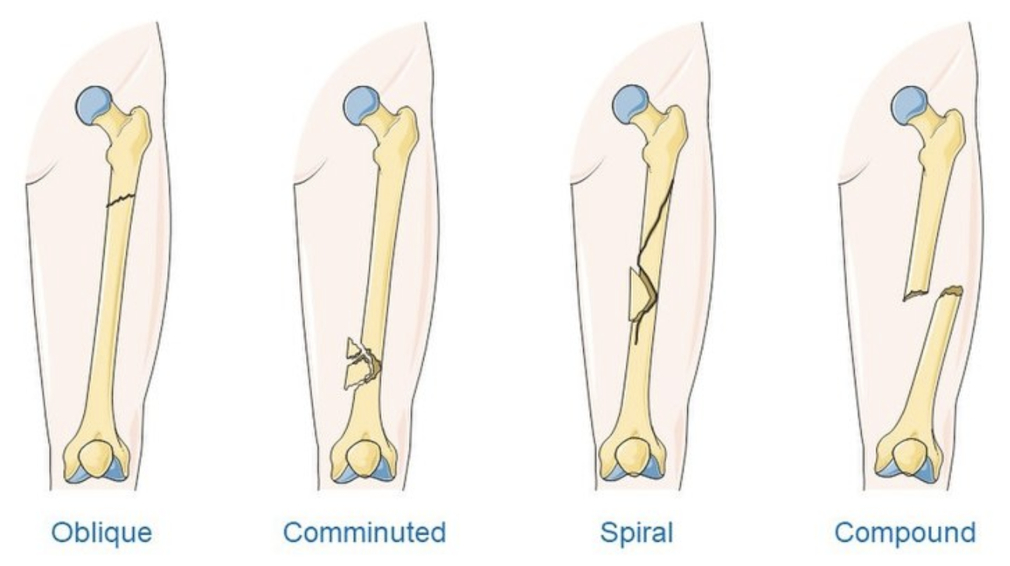
Ligaments are like rubber bands, they stretch and deform, then return to the resting position when the stimulus is removed. Ligaments have a peculiar quality in that they allow them to deform a certain amount prior to complete rupture. When injured, scar tissue may develop, altering the mechanical properties. The below picture demonstrates what happens to ligament as it is placed on stretch. First, there is an uncrimping or straightening of the fibers. If stretching continues, microscopic, then macroscopic injury may occur.
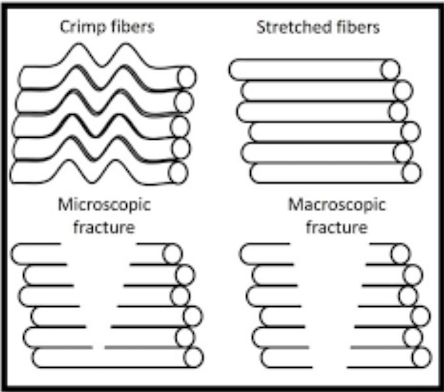
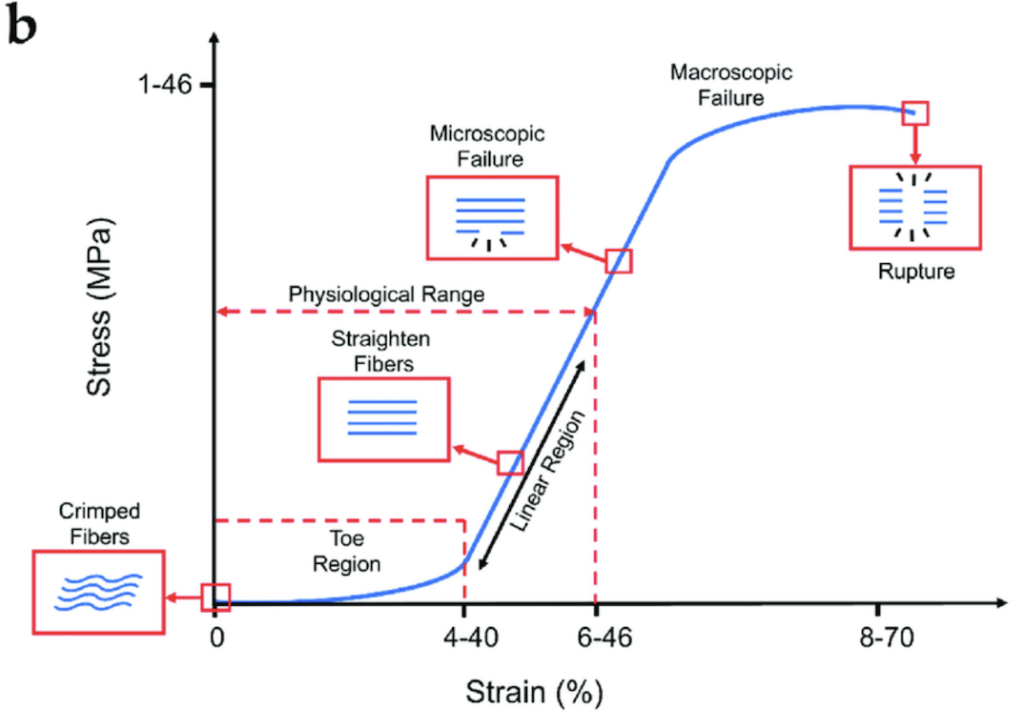
Similar to ligaments, muscle and tendons can be stretched for a certain length and time before injury occurs. With the obvious exception of muscular tissue contracts, ligaments and tendons behave in similar ways. Muscle tears can result in strength deficits and altered biomechanics. If not properly addressed, further damage may occur to the underlying bone, joints and soft tissues (cartilage, labrum, meniscus).
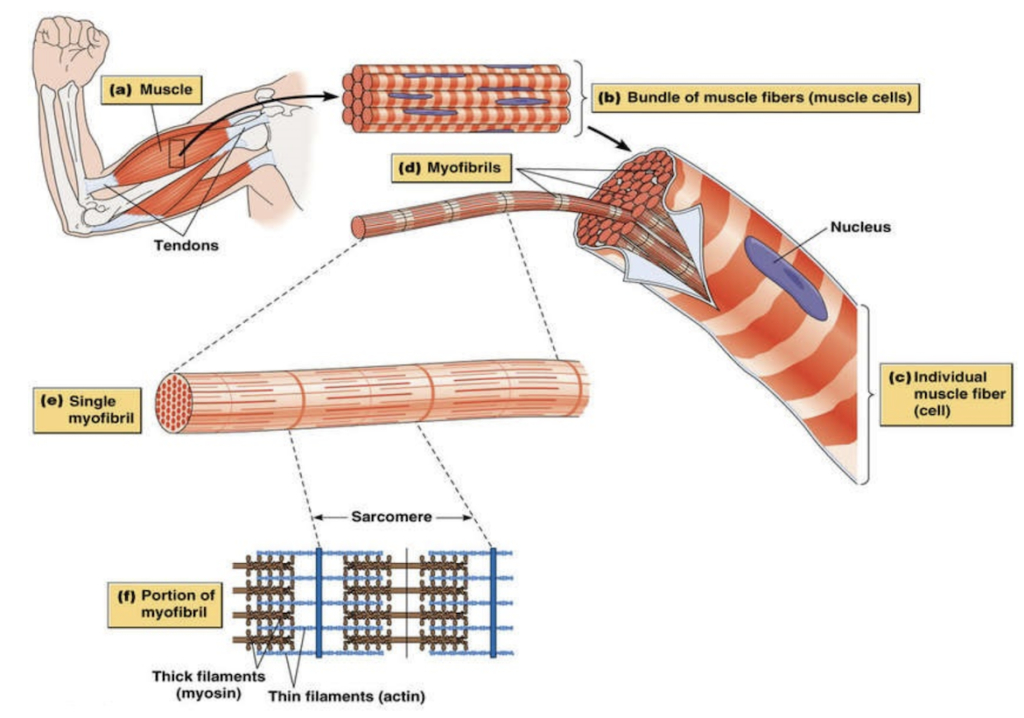
Cartilage is spongy and slippery. It acts as a shock absorber and lubricates for the joint. In the event of an injury, a piece of cartilage may fragment off the underlying bone, become a “loose body” in the joint space. If this fragment gets caught between the joint surfaces when loaded, it may cause further damage. Overtime, the joint surface undergoes degenerative changes on top of the acute trauma the loose body is causing. While degenerative joints are typical in the mid-30s and beyond, they can be treated successfully with conservative care physical therapy. Loose bodies may require surgical intervention if limitation in range of motion are observed.
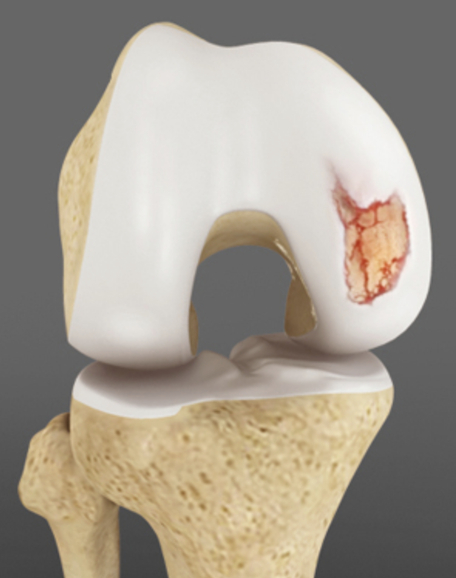
The above information is a general guide for an athlete. These are the injuries that often limit participation in sports. Combat sports such as wrestling, jiu jitsu, Muay Thai or field sports like soccer, football may experience specific types of injuries or different injury rates, but the general idea is the same. Sports related injuries most often include the bones, tendons, muscles, ligaments and joints. An athlete may experience multiple injuries at once (cartilage damage in addition to a muscle strain for example). While this may complicate the recovery process, a skilled physical therapist can facilitate the rehabilitation process by having open communication with the athlete, their coaches, family and other health care providers.
The first step in return to sport is having a proper sport-specific examination by a physical therapist. After the examination, the physical therapist should explain their findings, answer any questions and then develop a plan of care specific to the needs of the athlete.
At Dr. Abbate Physical Therapy in Miami, FL, we take the time to assess and discuss your needs as an athlete to help get you back on track with your sport!
High impact or successive impacts of a time without proper healing of tissue, will result in a bone fracture. Yes, this is the same thing as a bone “breaking”. Fractures are exquisitely painful, with the individual bracing the limb from moving. Stress fractures may occur when repeated stress is introduced (like running or jumping) and proper bone remodeling does not take place. Most fractures require a period of rest. A bone stimulator is maybe used or surgery may be warranted depending on the extent of the injury.

Ligaments are like rubber bands, they stretch and deform, then return to the resting position when the stimulus is removed. Ligaments have a peculiar quality in that they allow them to deform a certain amount prior to complete rupture. When injured, scar tissue may develop, altering the mechanical properties. The below picture demonstrates what happens to ligament as it is placed on stretch. First, there is an uncrimping or straightening of the fibers. If stretching continues, microscopic, then macroscopic injury may occur.


Similar to ligaments, muscle and tendons can be stretched for a certain length and time before injury occurs. With the obvious exception of muscular tissue contracts, ligaments and tendons behave in similar ways. Muscle tears can result in strength deficits and altered biomechanics. If not properly addressed, further damage may occur to the underlying bone, joints and soft tissues (cartilage, labrum, meniscus).

Cartilage is spongy and slippery. It acts as a shock absorber and lubricates for the joint. In the event of an injury, a piece of cartilage may fragment off the underlying bone, become a “loose body” in the joint space. If this fragment gets caught between the joint surfaces when loaded, it may cause further damage. Overtime, the joint surface undergoes degenerative changes on top of the acute trauma the loose body is causing. While degenerative joints are typical in the mid-30s and beyond, they can be treated successfully with conservative care physical therapy. Loose bodies may require surgical intervention if limitation in range of motion are observed.

The above information is a general guide for an athlete. These are the injuries that often limit participation in sports. Combat sports such as wrestling, jiu jitsu, Muay Thai or field sports like soccer, football may experience specific types of injuries or different injury rates, but the general idea is the same. Sports related injuries most often include the bones, tendons, muscles, ligaments and joints. An athlete may experience multiple injuries at once (cartilage damage in addition to a muscle strain for example). While this may complicate the recovery process, a skilled physical therapist can facilitate the rehabilitation process by having open communication with the athlete, their coaches, family and other health care providers.
The first step in return to sport is having a proper sport-specific examination by a physical therapist. After the examination, the physical therapist should explain their findings, answer any questions and then develop a plan of care specific to the needs of the athlete.
At Dr. Abbate Physical Therapy in Miami, FL, we take the time to assess and discuss your needs as an athlete to help get you back on track with your sport!

With sports participation comes the inherent risk of injury. The majority of athletes will experience at least one injury in their career. Injuries are defined as some period of time off from full participation in sport. Often, many athletes will “grit through” the pain and continue to participate regardless of the work capacity of the injured body part.
Many different types of injuries can occur in sport these can be categorized as acute (bone fracture, ligament rupture), chronic (cartilage degeneration) or acute on chronic (former ligament tear reinjured and now fully ruptured, or a ligament tear that causes degeneration of the cartilage).
Acute and chronic injuries can elicit pain, resulting in loss of flexibility, muscular weakness or fear avoidance behaviors. Very often, the athlete will subconsciously alter their movements to avoid the painful position. Overtime, this may cause other problems to arise other movements will change stress patterns going through a limb. If the structure is not accustomed to the stress, injury may result.
High impact or successive impacts of a time without proper healing of tissue, will result in a bone fracture. Yes, this is the same thing as a bone “breaking”. Fractures are exquisitely painful, with the individual bracing the limb from moving. Stress fractures may occur when repeated stress is introduced (like running or jumping) and proper bone remodeling does not take place. Most fractures require a period of rest. A bone stimulator is maybe used or surgery may be warranted depending on the extent of the injury.

Ligaments are like rubber bands, they stretch and deform, then return to the resting position when the stimulus is removed. Ligaments have a peculiar quality in that they allow them to deform a certain amount prior to complete rupture. When injured, scar tissue may develop, altering the mechanical properties. The below picture demonstrates what happens to ligament as it is placed on stretch. First, there is an uncrimping or straightening of the fibers. If stretching continues, microscopic, then macroscopic injury may occur.


Similar to ligaments, muscle and tendons can be stretched for a certain length and time before injury occurs. With the obvious exception of muscular tissue contracts, ligaments and tendons behave in similar ways. Muscle tears can result in strength deficits and altered biomechanics. If not properly addressed, further damage may occur to the underlying bone, joints and soft tissues (cartilage, labrum, meniscus).

Cartilage is spongy and slippery. It acts as a shock absorber and lubricates for the joint. In the event of an injury, a piece of cartilage may fragment off the underlying bone, become a “loose body” in the joint space. If this fragment gets caught between the joint surfaces when loaded, it may cause further damage. Overtime, the joint surface undergoes degenerative changes on top of the acute trauma the loose body is causing. While degenerative joints are typical in the mid-30s and beyond, they can be treated successfully with conservative care physical therapy. Loose bodies may require surgical intervention if limitation in range of motion are observed.

The above information is a general guide for an athlete. These are the injuries that often limit participation in sports. Combat sports such as wrestling, jiu jitsu, Muay Thai or field sports like soccer, football may experience specific types of injuries or different injury rates, but the general idea is the same. Sports related injuries most often include the bones, tendons, muscles, ligaments and joints. An athlete may experience multiple injuries at once (cartilage damage in addition to a muscle strain for example). While this may complicate the recovery process, a skilled physical therapist can facilitate the rehabilitation process by having open communication with the athlete, their coaches, family and other health care providers.
The first step in return to sport is having a proper sport-specific examination by a physical therapist. After the examination, the physical therapist should explain their findings, answer any questions and then develop a plan of care specific to the needs of the athlete.
At Dr. Abbate Physical Therapy in Miami, FL, we take the time to assess and discuss your needs as an athlete to help get you back on track with your sport!